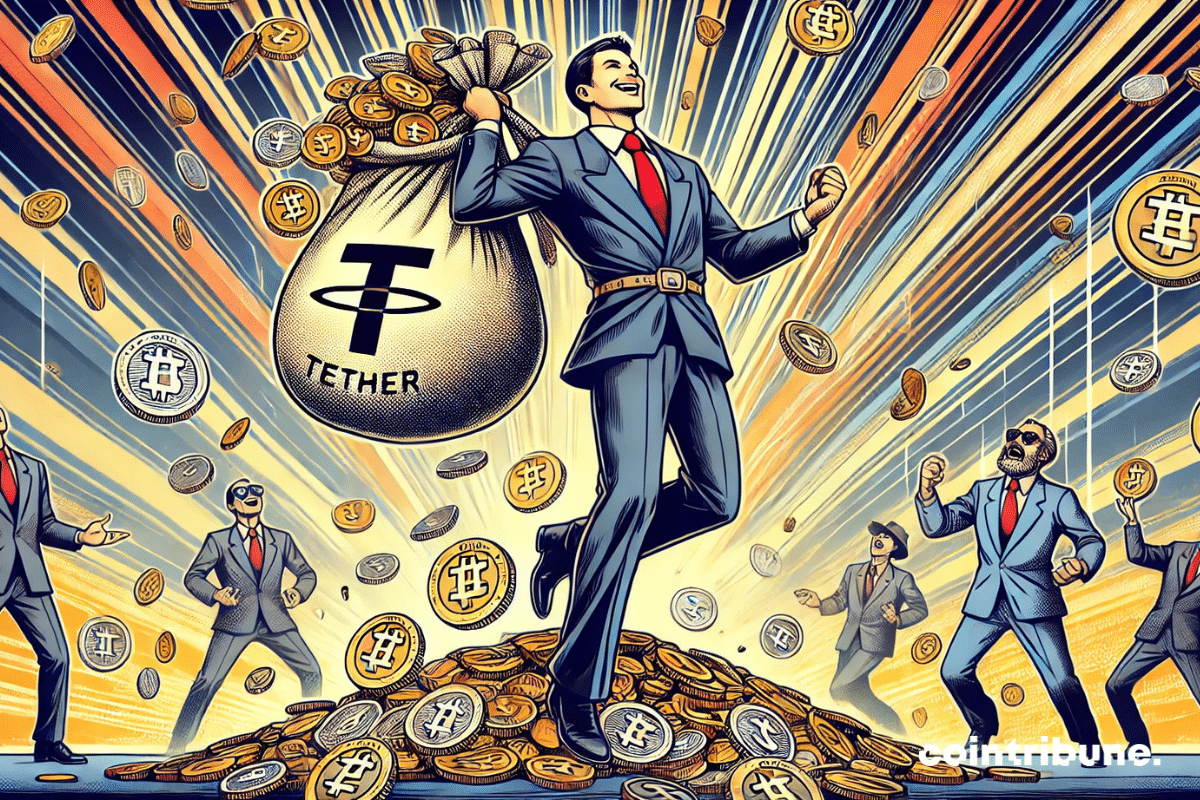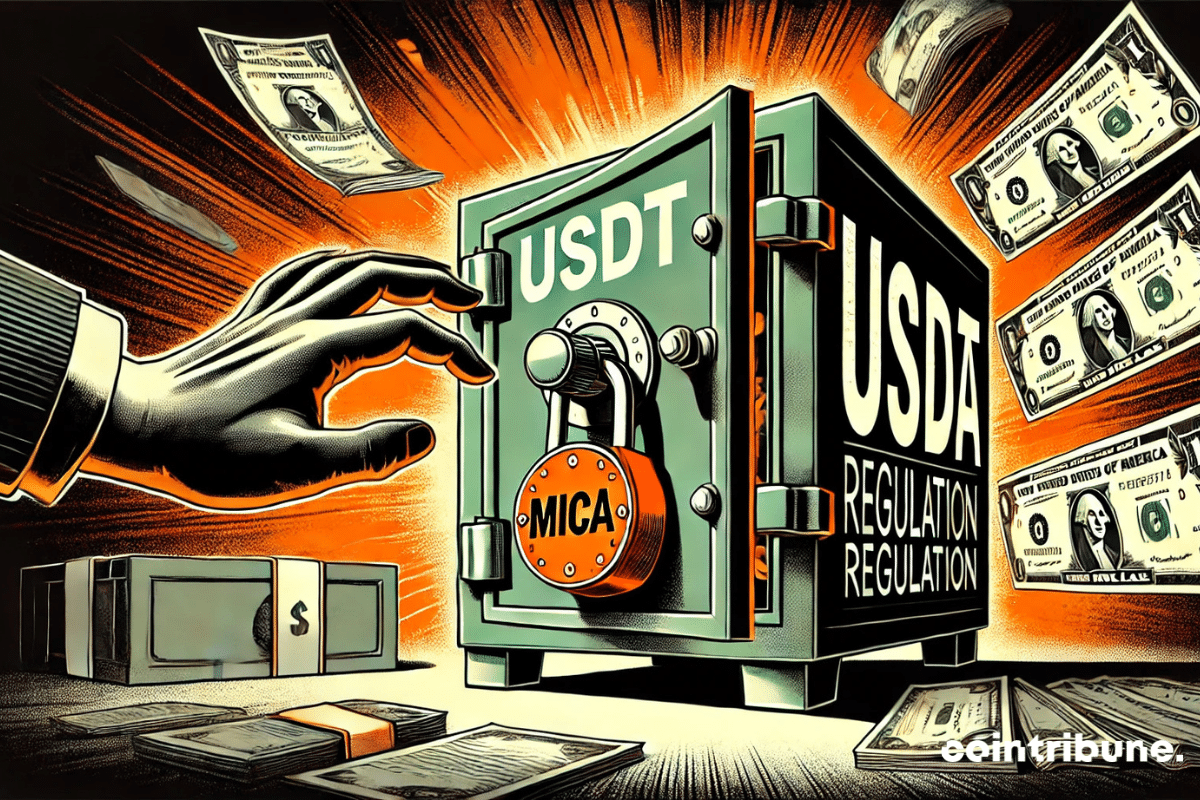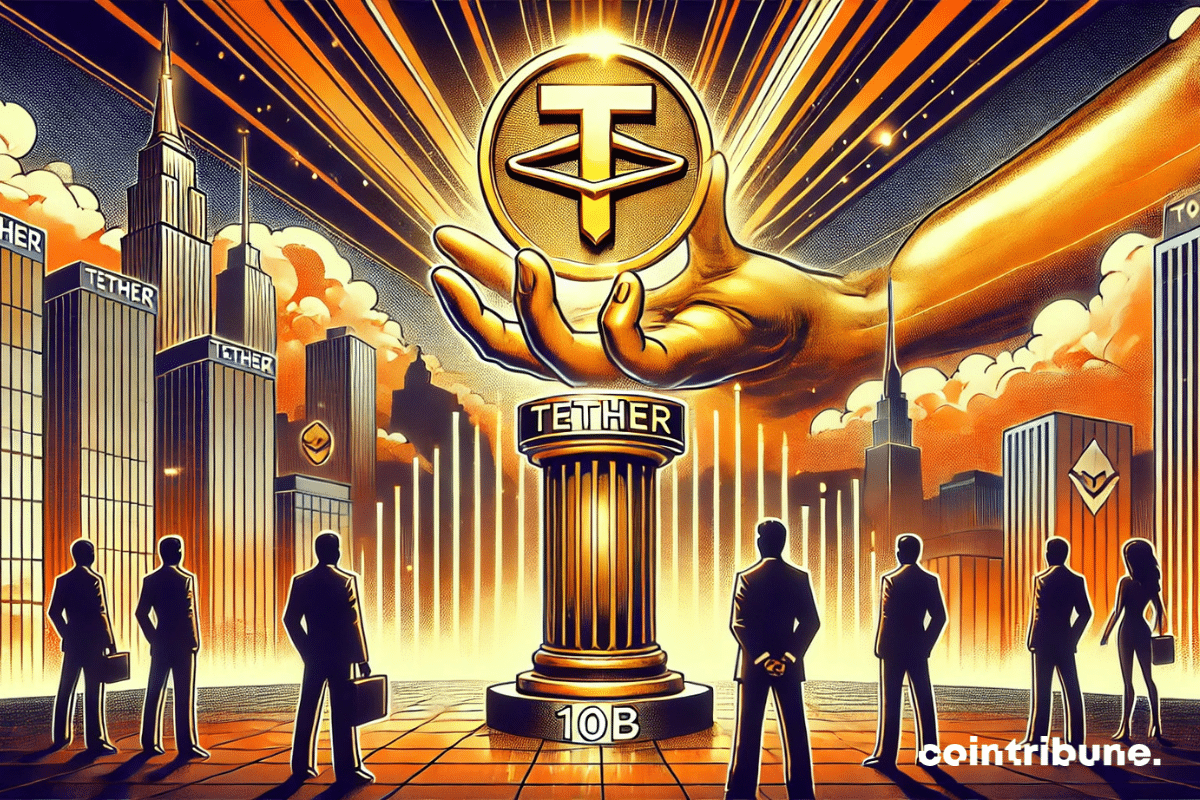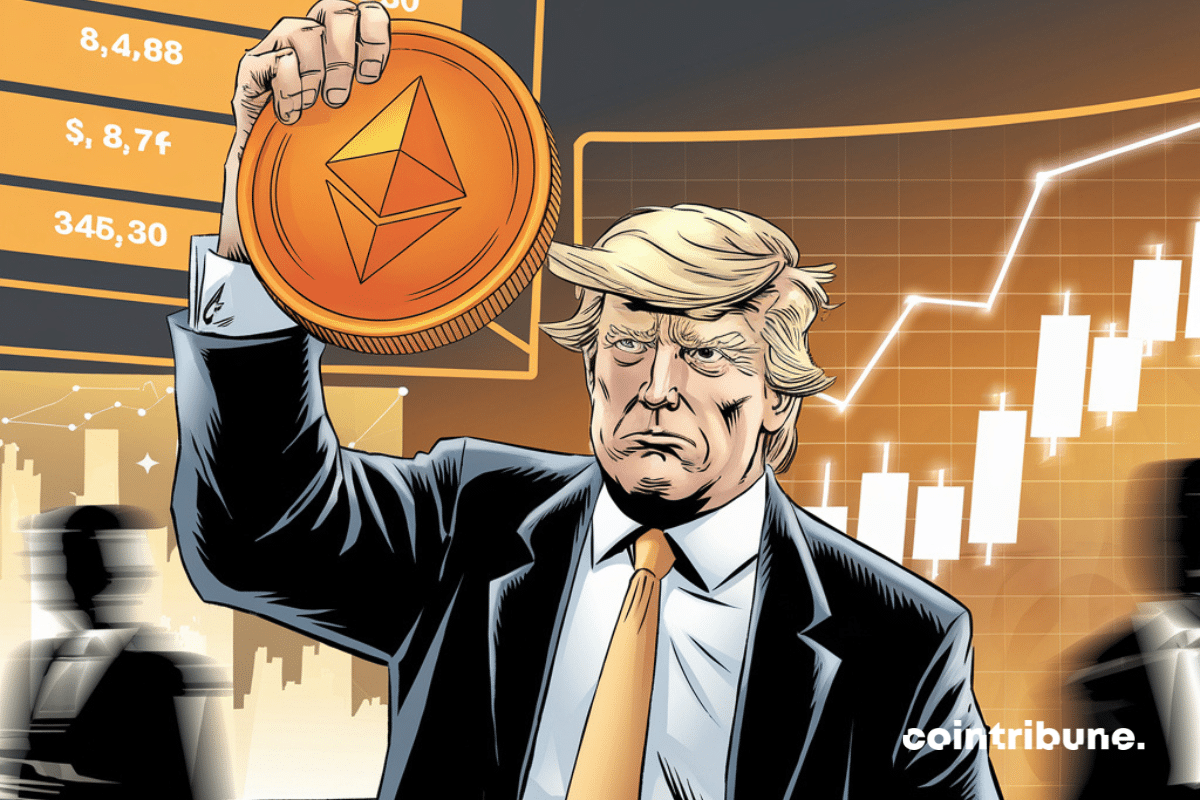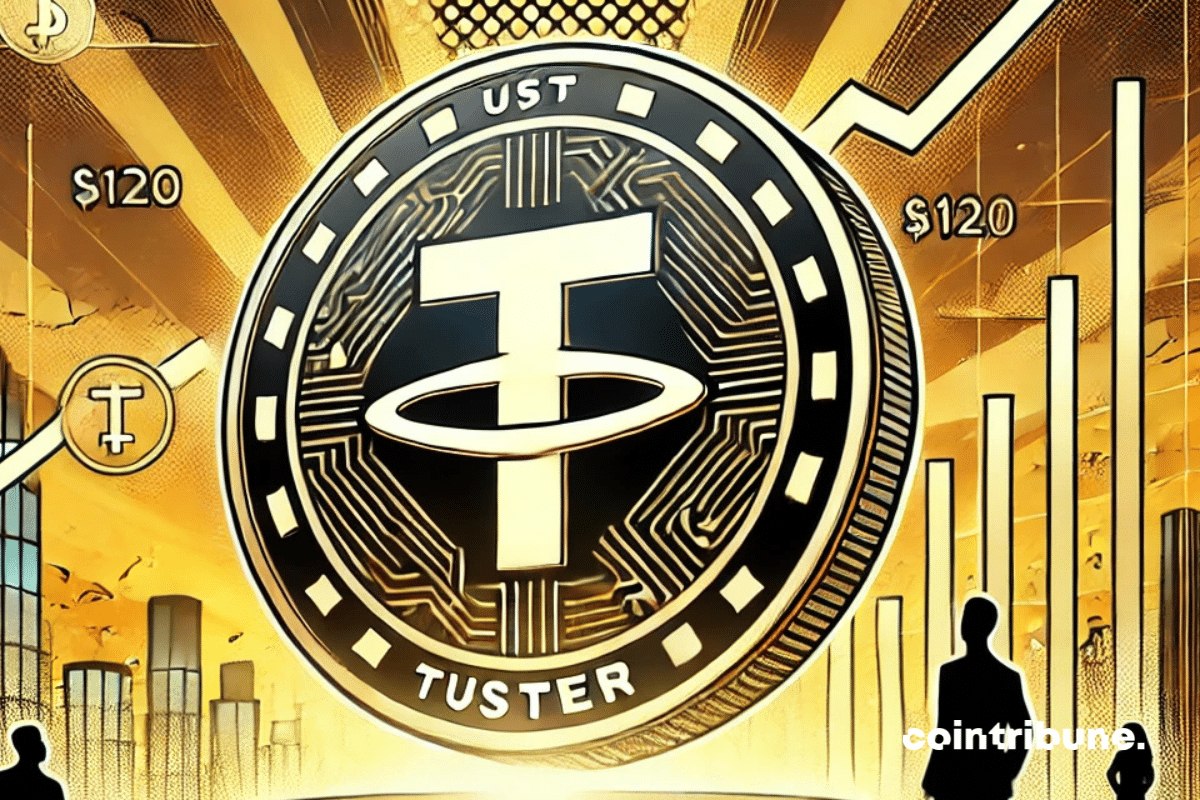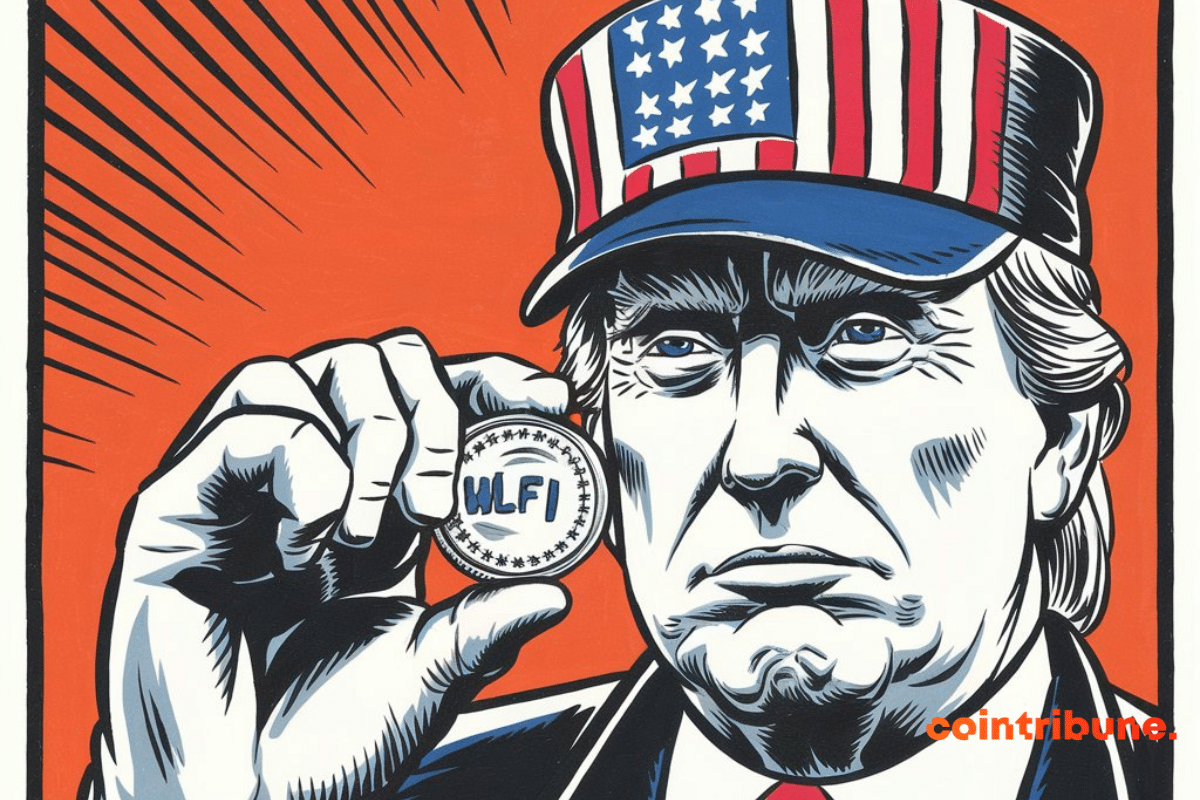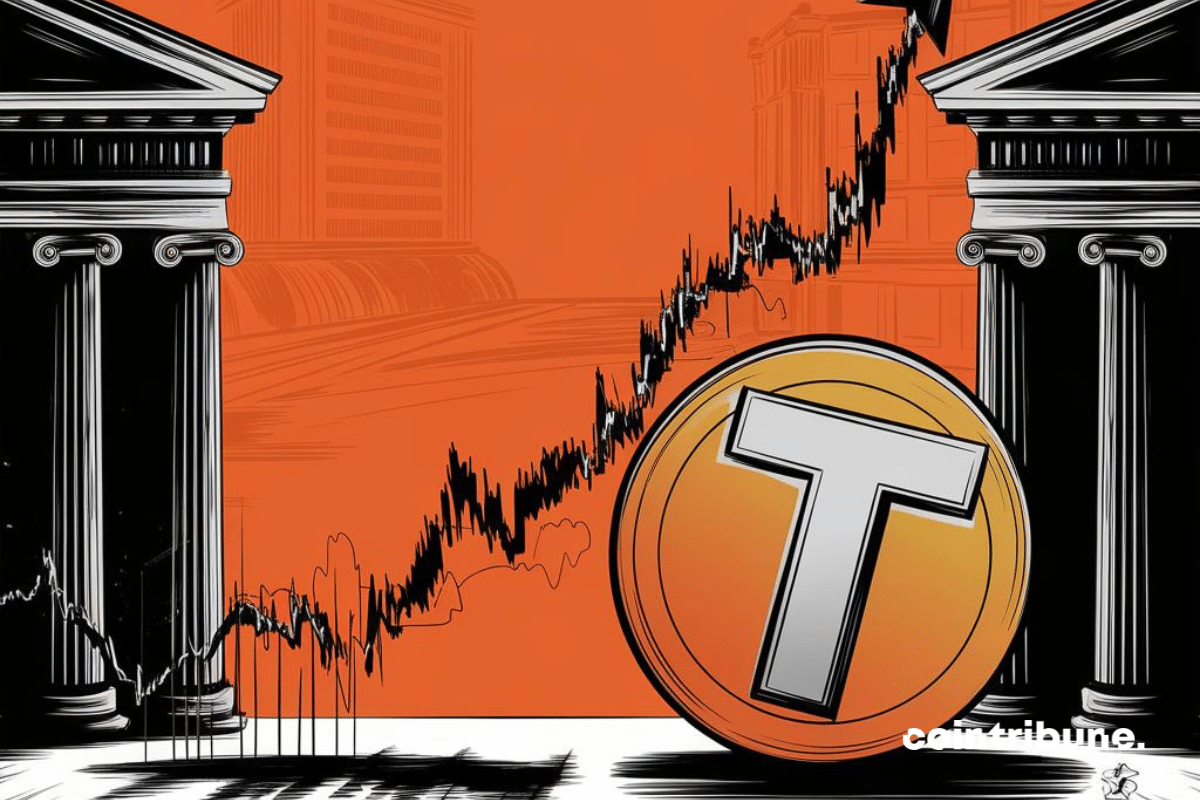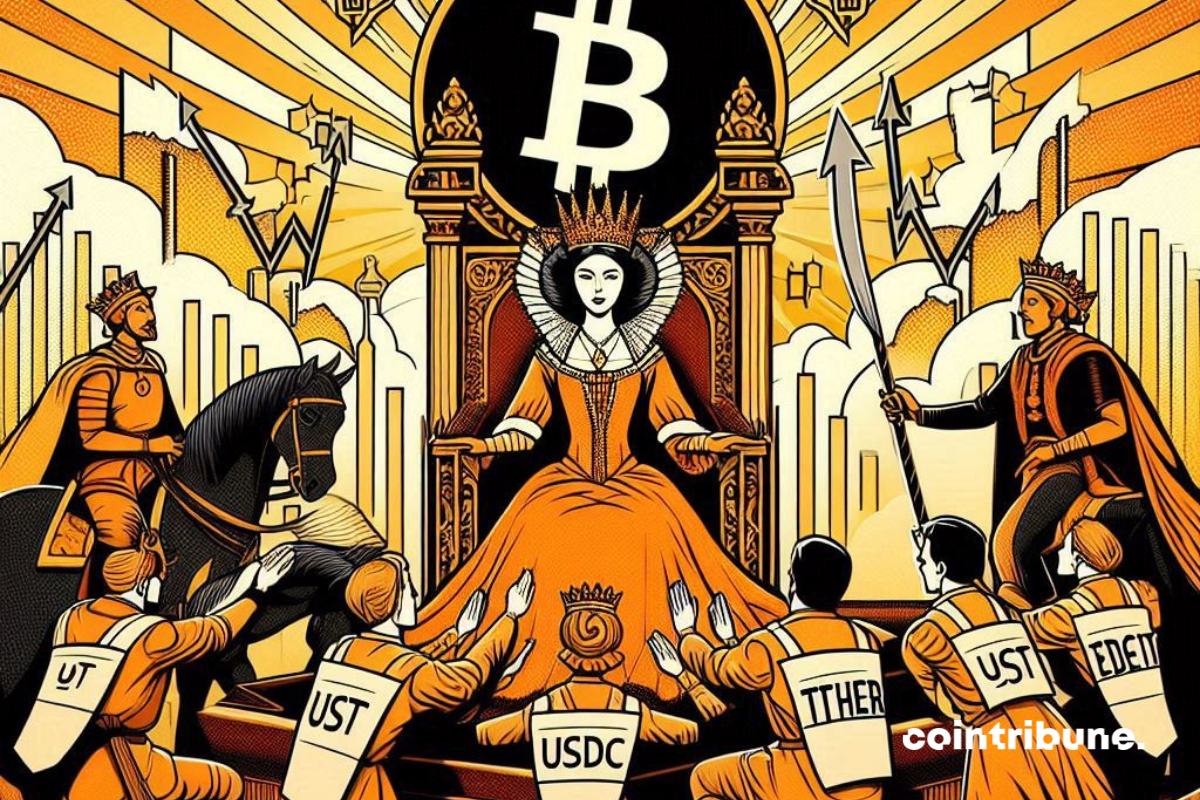Tron, the outsider no one expected, overshadowed Bitcoin in 2024, riding a tsunami of stablecoins and memecoins, turning the blockchain into a true transaction fair.
Tether (USDT)
The creation by Donald Trump of a sovereign fund overseen by Howard Lutnick is very promising for the bitcoin reserve.
The stablecoin market has just crossed a historic milestone, reaching a market capitalization of over $200 billion. This rapid progression reflects a growing interest from investors in these dollar-backed assets, often perceived as a more stable alternative amidst the volatility of cryptocurrencies. While Tether (USDT) still dominates the market with $139.4 billion, the current dynamics indicate a rise of USDC, whose capitalization has more than doubled in three months. This shift in balance raises strategic questions: are we witnessing a mere redistribution of capital or a precursor signal of a major turning point for the crypto market?
Europe is tightening its regulatory framework on stablecoins, and Kraken is forced to adapt. Indeed, the exchange announced the withdrawal of USDT and other stablecoins for users in the European Economic Area (EEA) before March 31, in response to the requirements of the MiCA regulation. This text imposes strict criteria on stablecoin issuers and limits their circulation in Europe. Such a decision illustrates a major shift for the European crypto market. As Kraken joins the list of platforms that comply with this regulation, investors must now choose between adapting to the new constraints or exploring other solutions. This transition could reduce the accessibility of the most popular stablecoins, but also redistribute the cards among market players.
The crypto industry is evolving at a breakneck pace, with some players managing to establish themselves well beyond their original ecosystem. Tether, the undisputed leader of the stablecoin market, has just released a financial statement that illustrates its rapid ascent. In 2024, the company generated $13 billion in profits, while its reserves in U.S. Treasury bonds surpassed $113 billion, making it one of the largest global holders of these securities. At the same time, the issuance of USD₮ has reached a record level, with $45 billion injected into the market. While these performances confirm Tether's financial strength, they also raise questions about its macroeconomic impact and the regulatory challenges ahead.
The issuer of the USDT stablecoin has expressed concerns regarding the withdrawal of its crypto from European platforms. This decision, driven by the new MiCA regulation, could create a "disordered" market according to Tether and pose risks for European consumers.
The European Union is intensifying its control over non-compliant stablecoins in accordance with its new regulations. Crypto.com has just announced the removal of Tether (USDT) and nine other cryptocurrencies in Europe, a decision that marks a shift for the sector. Such an initiative directly responds to the requirements of the MiCA regulation (Markets in Crypto-Assets Regulation), which imposes strict oversight of stablecoins and associated services. Following Coinbase, which removed USDT in October 2024, Crypto.com is following suit and imposing a precise timeline on its users. As of January 31, 2025, the purchasing and depositing of these assets will be banned on its European platform. Starting March 31, the remaining funds will be automatically converted into MiCA-compliant stablecoins. This removal goes beyond mere compliance. It reshapes the stablecoin landscape in Europe, where exchanges must now adapt to the new rules or risk sanctions. In a rapidly changing market, this announcement underscores the regulators' desire to impose a strict framework and raises uncertainties about the future of decentralized stablecoins in the EU.
MEXC, one of the leading crypto trading platforms, is launching its New Year Futures competition with a prize pool of 8 million USDT! This competition gives traders from around the world the opportunity to showcase their skills and kick off 2025 in style.
As the European Union prepares to implement the MiCA regulation, MEXC announces the continuation of USDT trading for European crypto users. The platform also offers attractive rewards and special events to support traders, thereby reinforcing its commitment to a smooth and secure trading experience.
The numbers are dizzying, the actions are striking: T3 FCU turns USDT into a nightmare for international fraudsters.
As Tether is set to announce record profits exceeding $10 billion for 2024, global banking giants are accelerating their positioning in the stablecoin market. From Société Générale to Deutsche Bank, traditional financial institutions are ramping up initiatives to not miss out on this crypto revolution.
The stablecoin market has just crossed a historic threshold, reaching a total capitalization of over $200 billion. This growth is largely dominated by Tether's USDT, which accounts for $142.9 billion in circulating assets.
The growing dominance of the stablecoin Tether in the crypto market could signal a significant correction for Bitcoin, according to a well-known expert on TradingView. This analysis comes as BTC struggles to maintain its upward momentum after its recent all-time high of $108,365.
The European Union stands on the brink of a historic change with the impending implementation of the MiCA regulation (Markets in Crypto-Assets), aimed at regulating cryptocurrencies and enhancing transparency in the market. Among the many implications of this regulation, the fate of the USDT stablecoin, issued by Tether, raises significant questions. This token, which holds a central position in crypto transactions worldwide, could be banned or restricted in Europe if authorities deem it does not meet MiCA's requirements. However, as the deadline of December 30, 2024 approaches, no clear directive has been communicated. This situation has led to varied responses among major exchange platforms. For instance, Coinbase has taken the lead by removing USDT from its European services and opts for a conservative approach in the face of regulatory uncertainties. Conversely, major players like Binance and Crypto.com keep the stablecoin accessible, as they bet on future clarifications. This climate of ambiguity reflects the scale of the challenges posed by implementing MiCA and highlights the need for a harmonized framework to avoid disrupting a rapidly growing sector.
Tether is the crypto version of 2025: BTC for real life, private AI for discretion, and Rumble to dethrone YouTube. That’s all there is to it!
The European Union is about to take a major step in regulating cryptocurrencies with the imminent entry into force of the MiCA (Markets in Crypto-Assets) rules. This initiative, praised by some as a step towards better transparency and an increased fight against financial abuses, however, triggers intense concerns among industry players. Indeed, the regulation requires the removal of USDT, the most widely used stablecoin in the world, from regulated platforms within the EU. Such a decision could disrupt the balance of European markets and call into question their attractiveness on the global stage.
On the crypto scene, Trump exchanges stablecoins for ETH. A bold move of 5 million that brightens his treasury of 73 million in digital assets.
MiCA in conductor mode: two stablecoins land in Europe, but banks are playing a risky tune.
Tether, king of the stablecoin, boasts in Lugano: gold, bitcoins, and bonds in pocket. But the suspicions still loom...
Tether (USDT), the largest stablecoin in the world, has just crossed a historic threshold of 120 billion dollars in market capitalization. This news, far from trivial, comes in the context of "Uptober," a traditionally favorable period for price increases of Bitcoin and other cryptos. While the crypto market is often unpredictable, the massive increase in the supply of stablecoins is often seen as a key indicator of growing investor appetite. As we stand on the brink of a new bullish wave, this signal suggests significant movements in the weeks to come.
"Decentralized finance, Trump’s new craze! The sale of WLFI promises mountains and wonders to investors… or not."
As inflation runs rampant, USDT trots in as a savior! Tether, proud of its stablecoin, is preparing a tribute film.
The neutral fear and greed index? An opportunity for those who prefer smart buying over depressing plunges!
On October 6, 2024, Tether, the issuer of the USDT stablecoin, celebrates its 10th anniversary with the release of a documentary titled "Stability and Freedom in Chaos." This film highlights the significant impact of USDT in countries like Turkey, Brazil, and Argentina, where rampant inflation has driven citizens to seek crypto alternatives to protect their wealth.
As Chinese stocks soar, Tether declines. It's not easy to play both sides at once!
The crypto universe never lacks surprises. As USDT begins to waver, an opportunity arises for altcoins, those alternative assets that often wait for their moment of glory. But could a simple drop in Tether’s dominance really trigger a new “altcoin season”? Let’s delve into the indicators and signals that suggest…
As the Federal Reserve (Fed) starts to change course on interest rates, Tether and four other stablecoin issuers risk seeing $625 million in annual interest income melt away. This upheaval, revealed by a recent CCData report, highlights stablecoins’ reliance on U.S. Treasury bonds, a crucial pillar of their economic model.
In 2023, Tether, the issuer of the USDT stablecoin, surpassed the largest asset manager in the world, BlackRock, in terms of profits. What seemed improbable a few years ago is today a reality that raises questions. Indeed, this contrast between traditional finance and crypto illustrates a paradigm shift in the way investors perceive stability and profitability. While USDT dominates the stablecoin market, Tether has managed to leverage this momentum to achieve historic performance.
Discover why Tether chose gold over Bitcoin to back its synthetic dollar, the aUSDT.
While Bitcoin lags behind, stablecoins could well wake it up. But beware, nothing is ever certain.




